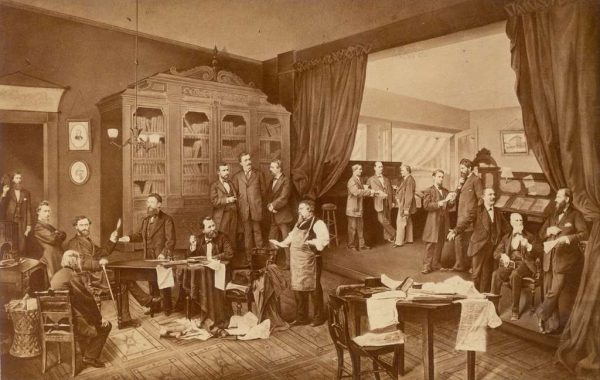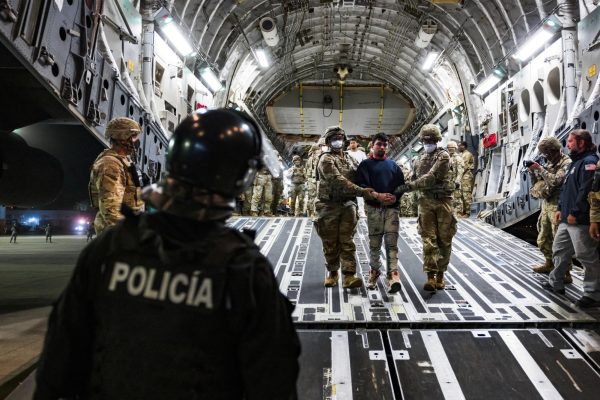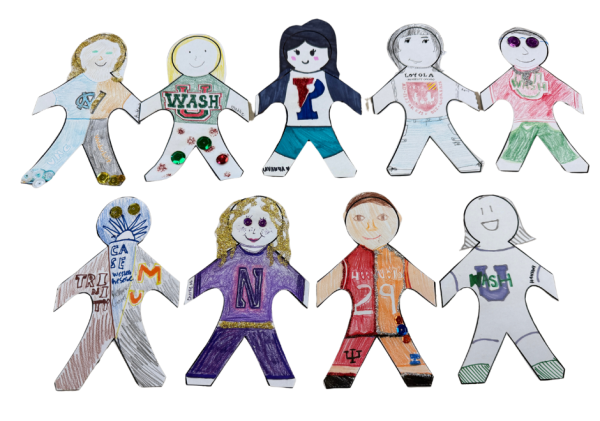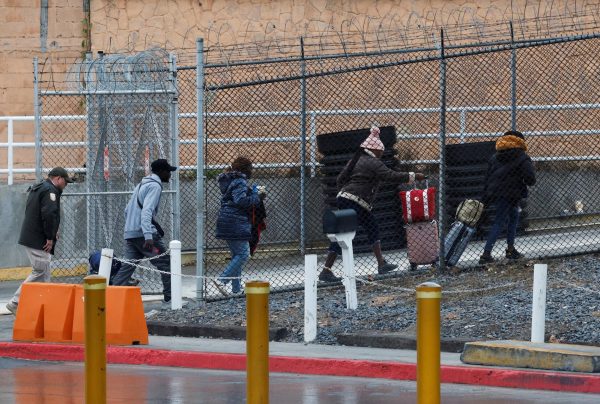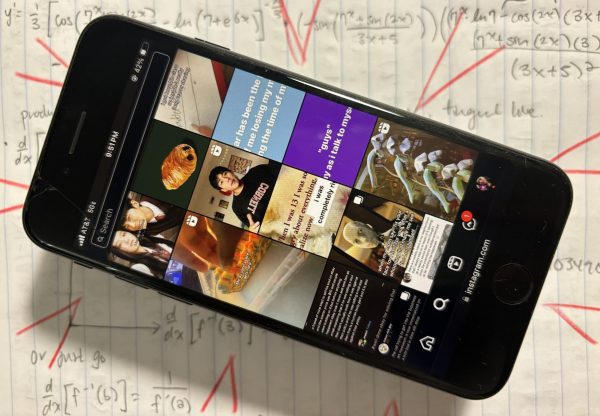Katie Cooper had ‘Mixed Feelings’ about COVID-19 via Close Exposure
Ms. Cooper speaks over what she went through during the first half of the school year, leading up to sudden, compelled quarantine.
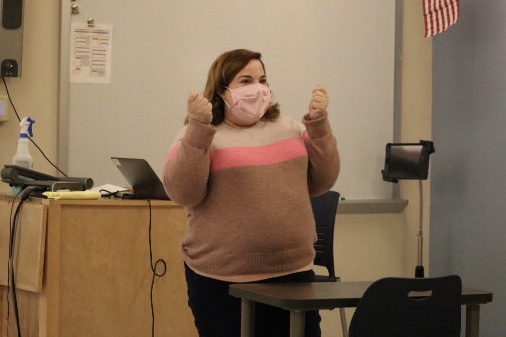
Ms. Cooper teaching one of her two College-Prep English classes for sophomores in room 004. She comes to school everyday and entertains her students when doing her part.
Mental health is something that gets worse when you end up being compelled to miss out on regular opportunities due to spread of negativity, or danger, until it gets closer to the time when you know you can resume normal life. As CHS returned to in-person learning last semester with active Covid-19 infections on the rise, feelings have been mixed about how to manage this as a student, or as a teacher. To start off 2021, I interviewed freshman and sophomore English teacher, Ms. Katie Cooper, to talk about mental health around being exposed to an infected individual because I saw her shifting to online during the second week in the building, which was when quarantine started rising from the beginnings of active infections.
On July 29, 2020, retiring superintendent Sean Doherty proposed the entire school district start the 2020-21 school year with remote learning. One pro of this new model of remote learning was being in regular school again and still open to your teachers. Back in 4th quarter of the 2019-20 school year, it was not the normal feeling of actual classes when we were sent to do independent work virtually.
“I think I had mixed feelings,” Ms. Cooper said. “I was happy that we were really thinking about safety and really thinking about what it could look like. I think we did a lot of planning over the summer and teachers really had lots of conversations about how to make remote learning better than it did the second quarter of last year since we were just kind of thrown into it.” One of the challenges of learning online is that other students choose to have their cameras off to show their opinions over being on camera vs. being in a physical environment. “It was so sad that we weren’t going to be able to be together in the classroom,” she continues, expressing her worries, “and I wasn’t going to get to know people quite as well as we do when we’re getting in. So, I think all kinds of emotions at the same time.”
I also felt like expressing my reactions to starting remote learning as well. The positive thing was we were able to have some type, but a funky, unnormal schedule and attend real classes. I felt lonely learning independently and only touching base with my history teachers every Wednesday, while my college siblings had the resources that we started using in August that they used when they did school back in March. “We took the things that didn’t work so well 4th quarter and tried to make them better for coming back remotely this year,” said Cooper.
When the elementary transition plan was made for learning in-person, I was wondering, “what about us?” In mid-october, a plan for Wydown and Clayton students was put in line for the second week of November, with A-L in the morning and M-Z in the afternoon, or your choosing, and the plan was official in the beginning of November.
Back at my first english conference, Ms. Cooper wanted to go back to the building because she wanted to “actually talk to people.” It did not occur until the same week that the decision was made, but internet is one of the highest problems of virtual learning in general, and I had an internet crisis on the Thursday of that week, getting kicked out by it in my history class, seven times in sixteen minutes, and I was just about done with staying home for school. Ms. Cooper’s reaction was similar to mine.
“I think between the time we made the decision and the time we came back, nerves started to creep in as well,” she said, “but my first reaction was being really excited and really happy.”
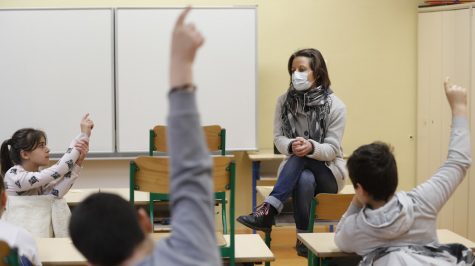
As WMS and CHS were opening up again, the privilege of eating lunch with other people was taken out for social distancing protocols. I was curious about how teachers spend their lunchtime these days, since they are the ones who are at the building all day from 8:10 to 3:20. “Teachers are spending a lot of time in their offices by themselves,” Ms. Cooper emphasizes, “The only place we can take masks off is if I’m in my office with a closed door.”
As a result of finishing the transition, more mental health situations were coming within the first two weeks back in the building with active infections starting to appear. In the second week of in-person learning, I had seen that Ms. Cooper shifted back to being in her home office.
“I was deemed a close contact of someone who had tested positive,” she explained, “So after the person that I was deemed close contact with tested positive and let the school know, the nurse came and told me that I had to go home and spend my fourteen days in quarantine because I was deemed to close contact with the person who had done the box.” Therefore, the situation featured a close call in between. “I had been in contact with someone for longer than fifteen minutes at less than six feet away,” she said, digging deeper into the numbers.
During these seven weeks of learning in-person, I have not been exposed or notified about being in close contact with any classmates who tested positive. My parents, mostly my mom, were compelling me to stay home and continue learning online until January, but I decided to disagree with that after deciding that the internet crisis was strike three. Ms. Cooper then explained how she managed her quarantine, although the second half of it was over break, but the most feelings came in here.
“I was nervous that I was going to test positive,” she expressed, “You know I had been around my parents. So, I didn’t want to have taken it to them, you know they’re older and so those nerves came about.” Ms. Cooper then explained her reaction to knowing how long quarantine is, although she understood time was not wasted as much as anticipated. “Hearing fourteen days felt really scary,” she continued, “and when I kind of took a break and thought about it, it really was only about five days because then we were all remote right before Thanksgiving.” One other part of the plan was having additional isolation time before and after lengthy breaks over the concept of seeing family and friends, if on people’s agendas. “It was scary the day I went to get the test to make sure that I was negative,” she adds, “but it was just normal nerves not anything, hard to manage.”
The moral of the story is mental health challenges arise as people choose to, or are compelled to miss out on their normal opportunities due to uncertainty. “Online has worked well for some kids and it just hasn’t for others,” Ms. Cooper said, “so I think having the hybrid option has been good and letting some kids do the online work, does work well to stay home and to have other kids in class.”
A $50 or more donation includes a subscription to the Clayton High School Globe 2024-2025 print news magazine.
We will mail a copy of our issues to the recipients of your choice.
Your donation helps preserve the tangible experience of print journalism, ensuring that student voices reach our community and that student democracy thrives.

This is Kirby's second year in the Globe department at CHS, and he's enjoyed his time meeting new people and working with an amazing group who knows how to design the newspaper!
2020-2021:...


